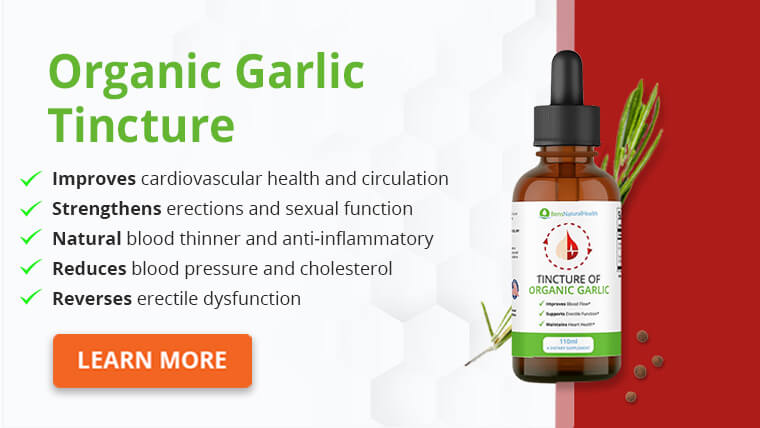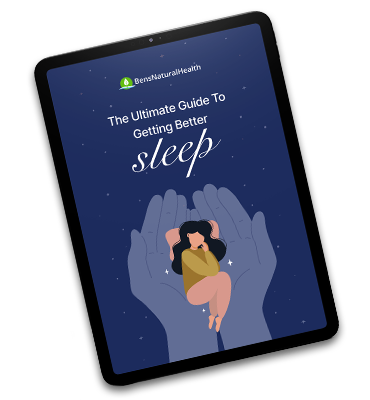According to the American Society of Hematology, around 900,000 people will develop a blood clot (such as DVT or PE) and around 10% of those people die from the blood clot.
While the ability for your blood to clot is important, too much blood clotting can become a problem, especially if you’re already at a greater risk of developing a clot.
The goal of treating and preventing blood clots with medications (like Xarelto and Eliquis) is to prevent serious blood clots but minimize excessive bleeding.
If your healthcare provider has recommended that you take an anticoagulant (blood thinning) medication like Xarelto or Eliquis, you likely have many questions about which medication might be the best.
In this article, we’ll review the studies on the safety and effectiveness of Xarelto vs Eliquis, their common side effects, and more so that you can be well-informed about your choices, along with their potential benefits and risks.
What is Xarelto (Rivaroxaban)?
Xarelto is the brand name for rivaroxaban, which is a type of anticoagulant medication. Anticoagulants are also called blood thinners, but they don’t actually work to thin your blood.
Instead, Xarelto works to prevent blood clots from forming by blocking a specific clotting factor called factor Xa. By blocking factor Xa, substances that work to form blood clots are inhibited.
The FDA originally approved Xarelto in 2011 to prevent DVTs in patients undergoing knee or hip replacement surgery, again in 2011 to prevent stroke in patients with abnormal heart rhythms, and again in 2012 to treat and reduce the recurrence of blood clots.
Additionally, Xarelto was approved in 2018 to reduce the risk of major cardiovascular events in patients with chronic Coronary Artery Disease (CAD) or Peripheral Artery Disease (PAD), again in 2019 to prevent blood clots in acutely (short-term) medically ill patients, and in 2021 to help prevent and treat blood clots in pediatric patients.
Xarelto is made by Bayer and is available in tablet form as well as a liquid suspension. The tablets come in 2.5 mg, 10 mg, 15 mg, and 20 mg strengths. The liquid suspension comes in one strength of 1 mg per milliliter.
Xarelto is taken once or twice daily, but it is generally taken once a day at higher doses.
Some of the reasons Xarelto is prescribed include:
- Helping to lower the risk of stroke or blood clots in people with atrial fibrillation (A-fib) not related to a heart valve problem (A-fib is an irregular heart rhythm).
- Lowering the risk of repeat blood clots in your legs or arms (called a deep vein thrombosis or DVT) or lungs (called a pulmonary embolism or PE).
- Preventing a DVT after having hip or knee replacement surgery.
- Treating a DVT or PE.
What is Eliquis (Apixaban)?
Eliquis is the brand name for apixaban, another anticoagulant/”blood thinner.” Like Xarelto,
Eliquis works by blocking clotting factor Xa.
Your blood can still clot while taking Eliquis (and Xarelto), but since it happens more slowly, you may be at a greater risk of excessive bleeding and bruising if you have an injury.
Eliquis was first approved by the Food and Drug Administration (FDA) in 2011 to help prevent stroke and blood clots in patients with A-fib, again in 2012 to reduce the risk of stroke and blood clots in patients with nonvalvular A-fib, and again in 2014 to treat DVTs, PEs, and reduce blood clots following knee and hip surgery.
Eliquis is manufactured by Bristol-Myers Squibb Company and comes in 2.5-milligram- and 5-milligram tablets.
While Eliquis doesn’t come in a liquid suspension like Xarelto does, it can be crushed and mixed with water, juice, a dextrose solution, or mixed in applesauce for patients who can’t swallow the tablets whole.
Eliquis can be taken with or without food and is taken twice daily. The standard dose of Eliquis is typically 2.5-5 milligrams twice daily.

Which blood thinner is safer?
Based on studies, Eliquis overwhelmingly appears to be safer than Xarelto in terms of causing less severe bleeding, which is a side effect of any type of anticoagulant.
According to a meta-analysis of ten retrospective studies, Eliquis is associated with lower rates of both major and gastrointestinal bleeding compared to Xarelto.
Researchers noted that Eliquis had lower rates of major and GI bleeding without being less effective than Xarelto.
A 2022 study on over 500,000 patients with A-fib compared the safety of Eliquis against other anticoagulant medications, including Xarelto.
Eliquis was associated with a lower risk for gastrointestinal bleeding but similar rates of ischemic stroke or systemic embolism, intracranial hemorrhage, and all-cause mortality (death) compared to Xarelto.
A 2017 study also concluded that Eliquis is associated with a lower risk of bleeding compared to Xarelto. In addition, Xarelto was found to cause more severe bleeding than warfarin, an older type of anticoagulant.
Finally, an American Heart Association review and meta-analysis concluded that the risk of severe bleeding is 48% lower with Eliquis vs Xarelto!
Xarelto vs Eliquis
The below sections directly compare Xarelto vs Eliquis, including uses, side effects and risks, benefits, effectiveness, and cost.
Uses
Xarelto and Eliquis are generally approved to treat similar conditions. Let’s summarize the uses for Xarelto vs Eliquis:
| Uses | Xarelto | Eliquis |
| Safe for children? | Yes. Approved to treat children from birth-18 years | Considered safe and well-tolerated in children and adolescents for certain conditions |
| Safe during pregnancy? | Not recommended | Not recommended |
| Safe during breastfeeding? | Not recommended | Not recommended |
| Approved to reduce the risk of stroke | Yes | Yes |
| Approved to treat and prevent blood clots | Yes | Yes |
| Approved for post-op blood clot prevention | Yes | Yes |
| Approved to reduce cardiovascular risk in patients with CAD and PAD | Yes | No |
| Approved to reduce blood clots in acutely ill patients | Yes | No |
Side effects and risks
All anticoagulants come with the risk of severe bleeding since your blood is slower to clot. Because Xarelto and Eliquis work similarly, their side effects and risks are similar.
Xarelto side effects
The most common side effect listed by the manufacturer of Xarelto is bleeding (in adults) and children: bleeding and vomiting.
Bleeding can occur anywhere, such as your skin, mouth, or, more rarely, your gastrointestinal tract.
Eliquis side effects
Eliquis comes with similar potential side effects as Xarelto and includes:
- Bleeding from cuts that take longer to stop
- Bleeding from your nose or gums
- Dizziness
- Bruising easily
- Excessively heavy menstrual bleeding
- Minor bleeding
- Nausea
Risks
As with any anticoagulant, there are risks of serious (and even fatal) bleeds, such as an intracranial hemorrhage (brain bleed when a blood vessel bursts in the brain).
If you have a brain bleed, the pressure from the pooling blood can build up in your brain and lead to rapid brain damage or death.
Fortunately, the risk of this condition is very low, impacting around 0.3% to 0.6% of patients taking oral anticoagulants yearly.
To help reduce your risk of severe bleeding while on Xarelto or Eliquis, you should ask your healthcare provider or pharmacist about any other drugs or supplements you’re taking.
The following drugs might increase your risk of severe bleeding:
- Aspirin or aspirin-containing products (aspirin is a natural blood thinner)
- Long-term (chronic) use of non-steroidal anti-inflammatory drugs (NSAIDs) like ibuprofen and naproxen
- Warfarin sodium (Coumadin or Jantoven brands)
- Any medicine that contains heparin
- Clopidogrel (Plavix), an antiplatelet medication
- Selective serotonin reuptake inhibitors (SSRIs) or serotonin-norepinephrine reuptake inhibitors (SNRIs); used to treat mood disorders like depression
- Other medicines to prevent or treat blood clots
Benefits
- Neither Xarelto nor Eliquis requires routine lab monitoring as warfarin (Coumadin) does. Patients taking warfarin need to have regular labs to check their prothrombin time and INR, which measure how quickly or slowly your blood is clotting.
- There are no food interactions with Xarelto or Eliquis like there are with warfarin. (Warfarin interacts with vitamin K, so if you’re taking warfarin, you’ll need to keep your intake of vitamin K-rich foods consistent to help warfarin work effectively.)
- Both medications are approved to treat a variety of conditions related to blood clots (e.g., postoperative, A-fib, etc.)
Get Your FREE Sleep Guide
- Learn how to naturally improve your sleep
- Dietary recommendations, supplements, and lifestyle changes
- Developed exclusively by our medical doctor
Effectiveness
Eliquis appears to be just as or more effective than Xarelto while causing less major bleeding. According to a study on over 580,000 patients, researchers at Vanderbilt University Medical Center concluded that Eliquis is more effective at reducing stroke risk while reducing the risks of severe bleeding.
Several other studies concur that, while both Xarelto and Eliquis are effective, Eliquis appears to be more effective while reducing the risks of severe bleeding.
Which is better?
Eliquis appears to be a better choice over Xarelto thanks to its superior effectiveness and significantly higher safety profile compared to Xarelto.
Cost of eliquis vs xarelto
A question commonly asked is xarelto cheaper than eliquis? There are no generic alternatives for Xarelto and Eliquis, so you’ll have to pay for the brand name, which is more expensive than the generic versions.
According to GoodRx at the time this article was written, here are the out-of-pocket estimates for both medications (assuming no healthcare or prescription drug coverage):
| Medication | Quantity | Strength (highest available) | Cost |
| Xarelto | 30 tablets | 20 milligrams | Around $500 USD |
| Eliquis | 30 tablets | 5 milligrams | $560-$600 USD |
Because Eliquis is usually taken twice daily (5 mg twice a day for a maximum dose of 10 milligrams daily) and the 20-milligram dose of Xarelto is taken once daily, that means that Eliquis would be more expensive in this case.
Your cost may vary depending on the dose and frequency specified in your prescription.
Is it OK to switch from Eliquis to Xarelto?
If your healthcare provider recommends switching between Eliquis and Xarelto, that can be done since they are similar medications.
You’ll only want to do this under the guidance of your healthcare provider, who can help you choose which medication will provide the greatest potential benefits given the potential risks.
Conclusion
This article compared Xarelto vs Eliquis. Xarelto (rivaroxaban) and Eliquis (apixaban) are both oral anticoagulant medications that work to reduce blood clotting by blocking clotting factor Xa.
Both medications are used to reduce the risk of blood clots and are approved to treat and prevent clots in a variety of settings/conditions.
According to studies, Eliquis appears to be safer than Xarelto and at least as, if not more, effective than Xarelto.
Based on the available data and research, Eliquis’ significantly lower risk of severe bleeding (a risk for all anticoagulants) compared to Xarelto appears to make Eliquis the superior medication in this comparison, given its effectiveness.
However, your healthcare provider can help you choose which medication is right for you, given your health history and financial situation, including preferred drugs for insurance, etc.
Explore More








